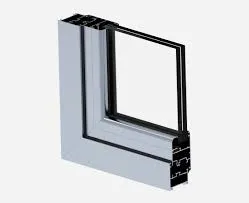ironwork
The Art and Craft of Ironwork
Ironwork is an ancient craft that has stood the test of time, combining functionality with artistic expression. The allure of iron lies not only in its strength and durability but also in its malleability when heated, allowing artisans to transform it into a myriad of forms. From intricate gates to exquisite railings, ironwork has been a cornerstone of architecture and design throughout history. This article delves into the history, techniques, and contemporary relevance of ironwork.
A Brief History
The origins of ironwork date back to ancient civilizations. Iron was first used around 1200 B.C. and quickly became the material of choice for tools, weapons, and ornaments. The Mesopotamians and Egyptians were among the first to harness the power of iron, creating not only functional tools but also decorative items. As time progressed, ironwork spread to Europe during the Middle Ages, where blacksmiths began to refine their techniques, leading to the development of aesthetic and ornamental ironwork.
During the Gothic period, iron was utilized extensively in architecture; cathedrals were adorned with iron gates, grilles, and window bars, showcasing the mood of the era. The Renaissance brought with it a renewed interest in art and beauty, resulting in more elaborate designs that emphasized curves and natural forms. Ironwork became a status symbol, representing wealth and power among the nobility.
Techniques of Ironworking
The traditional process of ironworking involves several steps forging, welding, and finishing
. Forging begins with heating the iron until it reaches a malleable state, allowing the blacksmith to shape it using hammers and anvils. This process not only redefines the physical form of the metal but also enhances its structural strength.Welding has evolved significantly over the years. Historical techniques such as forge welding required the pieces of iron to be heated and then hammered together, while modern methods like arc welding provide greater flexibility and precision. Both methods aim to create strong bonds between metal pieces, ensuring the integrity of the final product.
ironwork

Finishing is the final stage, where the iron is treated to protect it from corrosion and enhance its appearance. Techniques such as galvanizing, powder coating, or applying rust-resistant paint ensure that ironwork can withstand the elements for years to come.
Contemporary Ironwork
In today’s world, ironwork continues to thrive, both in terms of function and artistry. While traditional architectural elements remain popular, contemporary designers have embraced iron’s versatility, integrating it into modern designs. Iron sculptures, furniture, and decorative art pieces have become increasingly popular in galleries and homes alike, blending the line between practicality and aesthetics.
One notable trend is the use of wrought iron and cast iron in landscaping. Garden gates, trellises, and furniture pieces made of iron enhance outdoor aesthetics while providing durability against weather conditions. Artists often use iron to craft eye-catching sculptures that become focal points in public parks or private gardens.
Furthermore, the sustainability movement has reignited interest in traditional crafts, including ironwork. As consumers seek locally sourced, handcrafted items, artisans are finding success in reviving age-old techniques while also incorporating modern design philosophies. The renewed appreciation for craftsmanship has led to a resurgence of blacksmithing workshops, where enthusiasts can learn the trade and produce unique pieces that reflect personal aesthetics.
Conclusion
Ironwork is more than just a craft; it is a testament to human ingenuity and artistry. From its historic roots to its modern applications, iron continues to inspire and captivate. As we embrace the beauty and durability of iron in our surroundings, we not only honor the past but also pave the way for future innovations in design and functionality. The world of ironwork is one of endless possibilities, where the only limitation is the imagination of those who wield the hammer and anvil. As we look forward, one can only wonder what new forms and functions the age-old craft of ironworking will take in an ever-evolving world.
-
Wrought Iron Components: Timeless Elegance and Structural StrengthNewsJul.28,2025
-
Window Hardware Essentials: Rollers, Handles, and Locking SolutionsNewsJul.28,2025
-
Small Agricultural Processing Machines: Corn Threshers, Cassava Chippers, Grain Peelers & Chaff CuttersNewsJul.28,2025
-
Sliding Rollers: Smooth, Silent, and Built to LastNewsJul.28,2025
-
Cast Iron Stoves: Timeless Heating with Modern EfficiencyNewsJul.28,2025
-
Cast Iron Pipe and Fitting: Durable, Fire-Resistant Solutions for Plumbing and DrainageNewsJul.28,2025
-
 Wrought Iron Components: Timeless Elegance and Structural StrengthJul-28-2025Wrought Iron Components: Timeless Elegance and Structural Strength
Wrought Iron Components: Timeless Elegance and Structural StrengthJul-28-2025Wrought Iron Components: Timeless Elegance and Structural Strength -
 Window Hardware Essentials: Rollers, Handles, and Locking SolutionsJul-28-2025Window Hardware Essentials: Rollers, Handles, and Locking Solutions
Window Hardware Essentials: Rollers, Handles, and Locking SolutionsJul-28-2025Window Hardware Essentials: Rollers, Handles, and Locking Solutions -
 Small Agricultural Processing Machines: Corn Threshers, Cassava Chippers, Grain Peelers & Chaff CuttersJul-28-2025Small Agricultural Processing Machines: Corn Threshers, Cassava Chippers, Grain Peelers & Chaff Cutters
Small Agricultural Processing Machines: Corn Threshers, Cassava Chippers, Grain Peelers & Chaff CuttersJul-28-2025Small Agricultural Processing Machines: Corn Threshers, Cassava Chippers, Grain Peelers & Chaff Cutters












